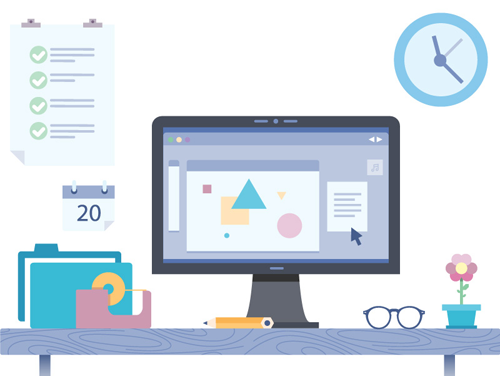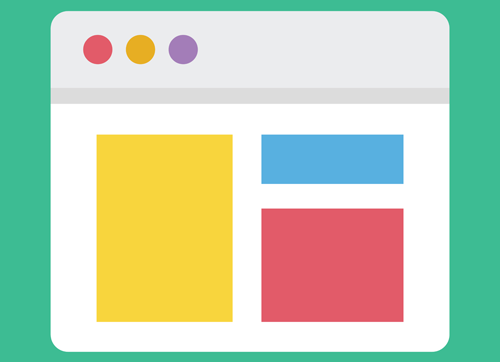Web Design vs. Development: It's Not About Picking a Side

The premise that Web designers should learn to code continues to grow as the distinction between Web design and development becomes more blurred. While it's important to be continually learning and developing oneself, exactly what you should be learning is more important for consideration.
It's more complex than just "Learn to code" or "Learn to design"; it's making collaboration and communication better as each craft has its distinguishing complexities, which must be considered for professionals in either 'camp.'
Earlier this year, the CSS4 editor's draft was rolled out, bringing with it numerous and exciting possibilities. It may also be slightly overwhelming, since most designers have yet to fully explore all that is CSS3, saying nothing of those in the coding world trying to venture into Web design.
As technology advances, the distinction between design and coding or logic and creativity are becoming less marked, making it important for both designers and developers to understand how the two disciplines interact, and how personal development must be directed moving forward.
This, especially, as both fields venture further into specialties: interaction designers, UX designers, visual designers vis-à-vis front-end developers, full-stack developers, iOS, Android and back-end developers. Amid all this specificity, the market demands for broader skill sets. Developers must appreciate design and vice versa, yet each remains unwilling to sacrifice part of their beloved craft in pursuit of learning what they don't know.
A designer or developer trying to get into the other field can very easily get overwhelmed on where to start. The fields are so wide and they may lack a forum to practice what has been learnt, meaning that such knowledge would be lost shortly afterwards.
Then and now

In 2010, renowned designer Elliot Jay Stocks expressed his surprise that there were Web designers who were unable to code their own designs, thus beginning the debate about whether or not designers shouldn't know how to code. However, this was 2010; there was no CSS3, HTML5 was a far-off dream and responsive Web design didn't even exist.
Hence, the idea of learning to code was as simple as learning HTML and CSS, that is, enough of coding to bring their own designs to existence. The line between the disciplines was clear. Designers today know HTML and CSS, meaning that the "Learn to Code" maxim has shifted to the Web development forte - not just bring static Web pages to life, but to code everything.
Design and development merge to create thrilling concepts like SVG animation and other data visualization possibilities. However, it's a tall order to expect a Web designer to traverse all that Web development has become. The real matter at hand should be, why should designers learn to code, or developers learn Web design?
Establishing common ground

The major driver behind the learn-to-code movement is about trying to get designers to understand the development workflow. Does one need to spend endless hours learning code for this to happen? Does a Web developer need to be familiar with the intricacies of Sketch, Photoshop, color theory or Illustrator to understand the design processes and principles that would make his work easier?
It all boils down to improving the communication link between Web developers and designers (and project managers, marketers and everyone else involved in a project) who are like Siamese twins sharing a heart. By each profession understanding the main principles of the other, both their work can be made easier. It's not about two 'sides' or 'them and us.'
The coders, who face unique communication challenges, must find ways to communicate their needs to the non-technical team members. Learning principles of design, digital marketing and related field may foster empathy to create better products for clients at the end of the day.
Meanwhile, design, which is seemingly growing at the speed of light, borrows much from programming e.g. atomic design, whose main concept has its basis on object-oriented programming. The designer may use tools like Specctr and Zeplin to better communicate design concepts to developers.
For better collaboration, a balance must be created for creation of design specifications, which a developer would find useful without taking up too much of the designer's time in the process. This co-creation will foster each profession's appreciation of the other, creating a valuable relationship between the two and finally tearing down the fence.
Moving forward

There's a lot to learn today, both for Web designers and Web developers, and not enough spare time. On the one hand, you have developments within your own field to keep abreast of, weighing which skills would better your career prospects within your chosen path, and on the other, you have all these crusaders demanding that you must know this, that or the other.
Where rubber meets the road, designers should learn as much of coding as their interests push them to. Developers should as well understand enough code to foster good relationships and make their own work easier. It's not so important to know each other's disciplines and become experts, unless that's what you want.
What's more important is to understand the quirks and processes associated with each. The danger with learning for social pressure is that such knowledge may go to waste if your future projects don't require it at all. And there's no guarantees regarding the kind of work you may get in the future.
While it seems like we're taking out all the hard work, nothing is further from the truth. It will take effort to learn how to empathize with each other's professions, and perhaps more difficult than taking a class to learn Photoshop or iOS programming. This kind is broader and continuous, and there's no certification to be handed out at the end.
The designer and developer share a lot, so much so that the divide between them is completely unfounded. There is much gain in bringing together the strong points and common centers of design and development to create better projects for clients with less effort. Create a balance between specialization and generalization, and remember that the more important skills are the soft ones, which you may never get in a classroom.
Author Bio: Lalit Sharma is an SEO consultant who runs a SEO house called Ranking By SEO. He is specialized in link building and other SEO-related activities. You can also find him on Twitter, Google+ and his blog.
Subscribe to Our Newsletter!
Latest in Web Design








